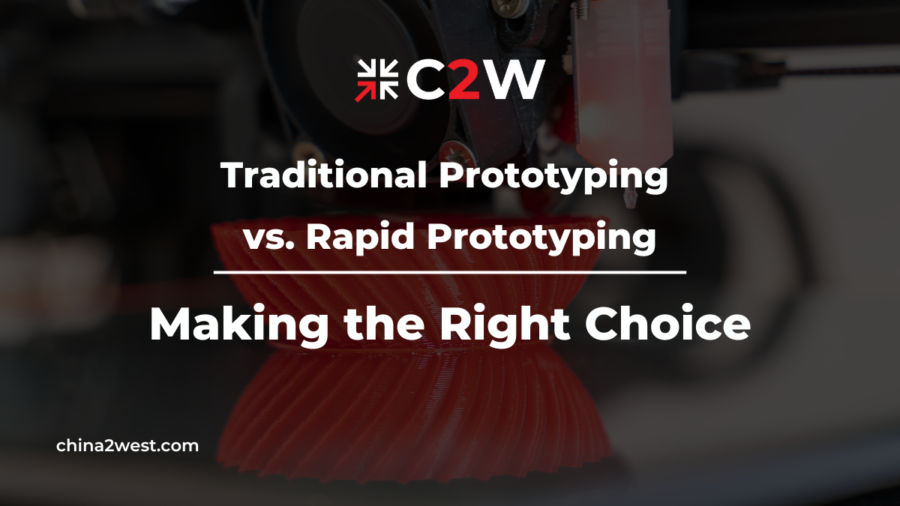In the dynamic realm of product development, the journey from a conceptual design to a tangible product is pivotal. Among the many phases that constitute this journey, prototyping stands out as a critical milestone. Over the years, the approach to prototyping has undergone a significant transformation, transitioning from traditional methods to more advanced, faster, and cost-effective techniques. This evolution has notably impacted the way products are designed, tested, and brought to market. In this blog post, we delve into the nuances of traditional prototyping and rapid prototyping, shedding light on how these methodologies have shaped the future of product design and development. As we explore these paradigms, we aim to provide valuable insights into their roles in the ever-evolving landscape of product development. Let’s dive right in.
Understanding Traditional Prototyping
Traditionally, product development was a slow and often cumbersome process. It involved extensive planning, designing, and a series of stages where physical models or prototypes were painstakingly crafted by using time-consuming methods.
Traditional prototyping serves as the cornerstone in the evolution of bringing designs from concept to reality. This methodology relies heavily on manual craftsmanship and the use of conventional tools such as lathes, mills, and molds. These tools are employed to meticulously shape materials into prototypes that mirror the intended final product. Such an approach is lauded for its unparalleled precision and ability to facilitate direct interaction with the prototype, allowing for comprehensive testing of its functionality, ergonomics, and aesthetic appeal.
The Rise of Rapid Prototyping
The journey of rapid prototyping began with the development of computer-aided design (CAD) software. This innovation marked a significant shift from traditional, manual drafting methods to digital design processes. CAD software enabled designers and engineers to create detailed, precise digital models of their ideas, laying a robust foundation for the next big leap in manufacturing technology.
The pivotal breakthrough in rapid prototyping came with the advent of additive manufacturing techniques, popularly known as 3D printing, in the 1980s. This technology was revolutionary, allowing for the direct production of physical parts and components from digital models. The impact was immediate and profound: the time and cost associated with traditional prototyping methods were drastically reduced. Where once it took weeks or even months to create a prototype, now it could be done in a matter of days or even hours.
Rapid Prototyping: Speeding Up the Product Development Cycle
Rapid prototyping became synonymous with speed and efficiency. This approach has transformed the design process, allowing for quick iterations and modifications. Designers and engineers can now rapidly produce a prototype, test it, tweak the design, and reprint within a very short timeframe. This rapid iteration cycle is invaluable for product development, enabling teams to refine and perfect designs at a pace that was unimaginable in the past.
The benefits of rapid prototyping extend beyond just speed. It allows for greater flexibility in design, encouraging creativity and experimentation. Designers are no longer constrained by the limitations of traditional manufacturing processes; if they can imagine it, they can likely print it. This freedom has led to innovations in various fields, from aerospace to medical devices, where customized and complex parts are now more feasible and affordable to produce.
Differences Between Traditional and Rapid Prototyping
At the heart of the comparison between traditional and rapid prototyping lie several pivotal differences that mark a significant shift in product development strategies.
1. Time Efficiency
Traditional Prototyping: This approach often involves manual processes like machining, molding, or handcrafting. Each step, from the initial design to the final prototype, can take considerable time, especially when revisions are necessary. This slower pace can be a significant drawback in a dynamic market environment.
Rapid Prototyping: Utilizes advanced technologies such as 3D printing, CNC machining, and laser cutting, which streamline the prototyping process. The ability to quickly iterate designs based on real-time feedback is a game-changer, allowing for agile development cycles. This rapid turnaround is crucial in industries where time-to-market is a critical factor for success.
2. Cost Implications
Traditional Prototyping: The costs can accumulate not just from the labor and materials, but also from the need for specialized tools and machinery for different projects. For small-scale productions or one-off projects, these costs can be prohibitively high. Additionally, any design changes can result in starting the process anew, further escalating costs.
Rapid Prototyping: While the upfront investment in rapid prototyping technology can be significant, it offers cost savings in the long run through reduced labor costs and material wastage. The flexibility to make design changes with minimal additional costs is particularly beneficial for startups and companies in the R&D phase.
3. Precision and Customization
Traditional Prototyping: While it is reliable for creating robust prototypes, the precision in traditional methods can vary based on the craftsman’s skill and the complexity of the design. Customizing designs can also be a cumbersome and expensive process.
Rapid Prototyping: Offers unparalleled precision, down to minute details, which is essential for applications in industries like aerospace and medical devices. The ease of customization allows for more creative freedom and personalization, which is particularly advantageous in fields like bespoke manufacturing and consumer products.
4. Material Choices
Traditional Prototyping: The versatility in material selection is a strong point, allowing for prototypes that closely mimic the final product’s materials. This aspect is crucial for functional testing in conditions similar to the end-use environment.
Rapid Prototyping: Initially limited in material diversity, rapid prototyping has seen significant advancements. The introduction of new materials and composites in 3D printing, for instance, has broadened its applicability. However, it still faces challenges in replicating the properties of certain traditional materials.
5. Environmental Impact
Traditional Prototyping: Often involves processes like cutting, carving, or milling, which can lead to significant material wastage. The disposal of these materials, especially non-recyclable or toxic ones, poses environmental concerns.
Rapid Prototyping: This tends to be more eco-friendly, as additive manufacturing minimizes waste by using only the necessary material to build the prototype. Additionally, the ability to use recycled materials in some rapid prototyping methods further enhances its sustainability credentials.
Making the Right Choice for Your Project
The choice between traditional and rapid prototyping is not a one-size-fits-all decision. It depends on various factors including project complexity, time, and cost. By understanding the strengths and limitations of each method, you can make an informed decision that aligns with your project’s specific requirements.
Are you in the process of bringing your innovative idea to life and need expert guidance on prototyping? Contact us today to discuss your needs with our team of experts. Our team specializes in transforming concepts into tangible prototypes, bridging the gap between your vision and a viable product. We understand that every idea is unique, and our approach is tailored to suit your specific requirements. Whether you’re at the early stages of design or ready for a functional prototype, we’re here to assist.


